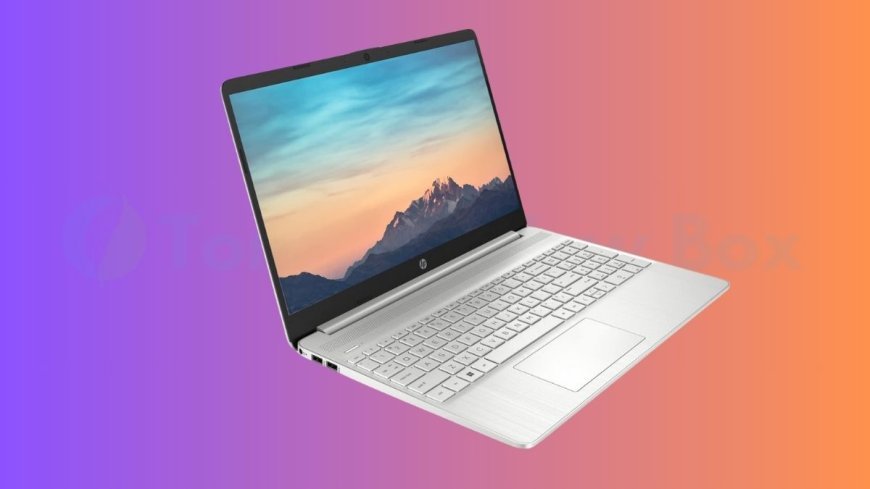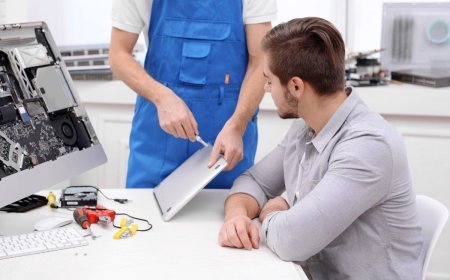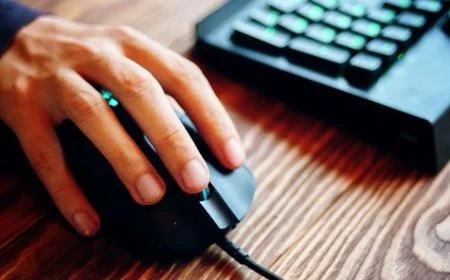HP Laptop Screen Won't Turn On: Troubleshooting Solutions
Discover troubleshooting solutions to fix your HP laptop screen that refuses to turn on. Get expert guidance and resolve the black screen issue.

Is your HP notebook LCD screen refusing to light up when you power it on? Dealing with a black screen issue can be frustrating, but fret not! In this guide, we will unravel the common reasons behind why your HP notebook laptop screen won't turn on, including power button issues and hard drive problems, and provide you with practical solutions to get it back up and running smoothly. From simple troubleshooting steps to more advanced fixes, we've got you covered to help you resolve this pesky problem swiftly. Stay tuned to discover how you can troubleshoot and potentially fix your HP laptop screen glitch without the need for costly repairs.
Key Takeaways
-
Initial Troubleshooting Steps
-
Start with basic troubleshooting like checking the power source and restarting the laptop to resolve screen issues.
-
-
Addressing Connection Issues
-
Ensure all cables and connections are secure and functioning properly to avoid screen blackout problems.
-
-
Solving Display Problems
-
Adjust display settings and update graphics drivers to fix screen visibility issues on your HP laptop.
-
-
Handling Faulty Updates
-
Roll back recent updates or perform system restores if a problematic update is causing the screen to not turn on.
-
-
Seeking Professional Help
-
If DIY solutions don't work, consider seeking assistance from HP support or a professional technician for a thorough diagnosis and repair.
-
-
Before Sign-in Solutions
-
Try booting into Safe Mode or accessing BIOS settings if the screen remains black before signing in to Windows.
-
Understanding Black Screen
Common Causes
Black screen on an HP notebook can stem from various computer issues. Computer hardware malfunctions, such as a faulty display or graphics card, are common culprits. Software glitches, like corrupted system files or outdated drivers, can also trigger the problem.
-
Faulty hardware: A damaged display panel or graphics card can lead to a black screen.
-
Software issues: Corrupted system files or outdated drivers may cause the screen malfunction.
-
Battery problems: Low battery levels or a defective battery can result in the screen not turning on.
Before vs After Sign-in
When an HP laptop's screen is unresponsive before signing in, it might indicate hardware failures. However, if the screen goes black after sign-in, it could point towards software-related problems.
-
Pre-sign-in behavior: Hardware failures often manifest as a black screen before signing into the laptop.
-
Post-sign-in behavior: Software-related issues may cause the screen to go black after logging into the system.
Before signing in, if you see a black screen with no display at all, it might be due to hardware issues. On the other hand, if the screen turns black after entering your credentials, software problems could be at play.
Initial Troubleshooting Steps
Perform Hard Reset
Performing a hard reset on an HP laptop can help resolve screen display issues. To do this, first, turn off the laptop completely. Then, disconnect the power supply and remove the battery if possible. Press and hold the power button for about 15 seconds to drain any residual power. Reinsert the battery, connect the power supply, and turn on the laptop. This process can often fix minor software glitches causing the screen not to turn on.
Connect External Monitor
Connecting an external monitor to your HP laptop is a useful way to test if the issue lies with the laptop screen, memory, or other components. Start by powering off both devices. Connect one end of the VGA/HDMI cable to the external monitor and the other end to your laptop. Turn on both devices, and if you see visuals on the external monitor but not on your laptop screen, it indicates a potential problem with your laptop's display hardware.
Addressing Connection Issues
Test Display Devices
When dealing with an issue of an HP laptop screen not turning on, one crucial step is to test display devices and memory. Start by reseating memory modules to ensure they are properly connected.
Reseat Memory Modules
To reseat memory modules in an HP laptop, follow these steps carefully. First, power off the laptop and disconnect all cables. Next, remove the battery and locate the memory module compartment.
Carefully remove the memory modules from their slots and then reinsert them firmly to test the computer step. Ensure that they are correctly aligned and fully seated in their respective memory slots. This simple procedure can often resolve issues related to the screen not turning on.
Test Memory Slot
Testing memory slots for potential faults is another essential troubleshooting step. Begin by powering off the laptop and removing all external connections. Locate the memory slot on your HP laptop.
Gently remove the existing memory module from the slot and inspect it for any visible damage or debris. Carefully insert the memory module back into the slot, ensuring a secure connection. Testing memory slots can help identify any underlying issues causing the screen malfunction.
Solving Display Problems
Refresh Screen
Refreshing the screen on an HP laptop can resolve various display issues. Press the "F5" key to refresh the screen quickly and effectively. This action reloads the current page or document, potentially fixing any glitches.
To refresh the screen, simply locate the "F5" key on your keyboard. Press it once to trigger the refresh command. This process helps in clearing temporary display problems, offering a quick solution.
-
Immediate action: Refreshing the screen provides an instant fix for minor display issues.
-
Simple troubleshooting: It is a straightforward technique that can be done without technical expertise.
Adjust Brightness
Adjusting brightness settings is a common method to troubleshoot screen problems on an HP laptop. Begin by locating the brightness controls on your device. Navigate to the settings menu to modify the brightness levels.
To adjust brightness, access the settings menu on your HP laptop. Locate the display or brightness section and make necessary adjustments. Changing brightness levels can significantly impact screen visibility and clarity.
-
Enhanced visibility: Adjusting brightness ensures optimal viewing experience.
-
Customizable settings: Users can personalize their screen brightness based on preferences.
Handling Faulty Updates
Uninstall Updates in Safe Mode
To address screen issues, uninstall updates in Safe Mode to troubleshoot errors effectively. Start by restarting the system. Access Advanced Startup Options by pressing Shift while clicking Restart.
Navigate to Troubleshoot > Advanced Options > Startup Settings > Restart. Press F4/F5 to enable Safe Mode with/without Networking. Go to Settings > Update & Security > Windows Update > View update history.
Select Uninstall Updates and choose the problematic update. Confirm the uninstallation process. Reboot the laptop and check if the screen functions properly. Uninstalling updates in Safe Mode ensures a secure environment for troubleshooting.
Rollback Display Drivers
Resolve screen problems by rolling back display drivers. Open Device Manager by right-clicking the Start button. Expand Display Adapters and select the display driver causing issues.
Right-click and choose Properties, then go to the Driver tab. Click Roll Back Driver if available; otherwise, select Update Driver > Browse my computer for drivers > Let me pick from a list.
Choose the previous driver version and proceed with the installation. Correct driver installations are crucial for optimal screen functionality. Rolling back drivers can often resolve compatibility errors or glitches affecting the display.
Advanced Solutions
Recover Notebook BIOS
Recovering the notebook BIOS can resolve screen issues. To restore BIOS settings, access the BIOS menu during startup. Follow the on-screen instructions to reset to default settings. The BIOS plays a crucial role in ensuring proper screen operation.
Testing memory modules is essential for identifying screen faults. To conduct tests, power off the laptop and remove the battery. Locate the memory module slots and carefully remove them. Clean the contacts and reseat the modules properly. Testing memory modules helps diagnose potential issues affecting the screen.
Test Memory Module
To identify faults affecting the screen, testing memory modules is crucial. Power off your laptop and remove all external devices. Locate the memory module slots under the cover and gently release them. Clean the contacts with a soft cloth or eraser before reseating them firmly back into place. This step is vital in diagnosing screen-related issues effectively.
Windows Explorer Solutions
Restart Windows Explorer
To troubleshoot hp laptop screen won't turn on issues, restarting Windows Explorer can be effective. First, press Ctrl + Shift + Esc to open Task Manager. Locate Windows Explorer, right-click, and select Restart. This action refreshes the graphical shell without affecting other processes.
Before Sign-in Solutions
Prompt System Restore
System restore can be a useful solution for fixing screen malfunctions on your HP laptop. To initiate a system restore, first, access the Control Panel from the Start menu. Then, select "Recovery" and choose "Open System Restore."
Next, follow the on-screen instructions to select a restore point before the issue occurred. Confirm your selection and let the system restore process run. System restoration is beneficial as it can revert settings to a time when the screen was functioning correctly.
After Sign-in Solutions
Uninstall Recent Updates
Users experiencing hp laptop screen won't turn on issues after sign-in can try uninstalling recent updates. Removing these updates can often resolve screen problems and restore functionality. To begin, access the main menu of your laptop and navigate to the settings section.
Next, look for the option that allows you to manage updates on your system. From there, select the recently installed updates that might be causing conflicts with the screen display. By uninstalling these updates, you can potentially eliminate any issues that are hindering the screen from turning on properly.
Managing updates is crucial for maintaining the stability and performance of your screen. Regularly checking for and uninstalling problematic updates can help prevent future occurrences of hp laptop screen won't turn on scenarios. Ensuring a clean update history can contribute to a smoother user experience overall.
Seeking Professional Help
Contact Customer Support
Users facing issues with their hp laptop screen not turning on should consider contacting customer support for advanced troubleshooting. HP's customer support team can provide guidance on resolving complex screen problems beyond basic solutions.
Reaching out to HP's customer support can be done through various channels such as phone, email, or live chat. By engaging with professional assistance, users can receive expert advice tailored to their specific screen issue.
The benefits of seeking professional help include access to specialized knowledge and resources, ensuring a thorough diagnosis of the problem. By following the guidance provided by HP's support team, users can effectively address unresolved screen issues and potentially avoid costly repairs or replacements.
Summary
In troubleshooting your HP laptop screen that won't turn on, you've learned about black screen issues, initial steps to take, connection problems, display glitches, handling faulty updates, advanced solutions, and more. By following these steps and seeking professional help if needed, you can resolve the problem efficiently. Remember to check connections, update drivers, and utilize Windows Explorer solutions. Before and after sign-in, there are specific actions you can take to tackle the issue effectively. Now armed with these strategies, you're well-equipped to address the screen problem on your HP laptop.
Don't hesitate to implement these solutions and seek assistance when necessary. Your proactive approach will lead to a functional laptop screen and a smoother user experience. Keep exploring ways to troubleshoot tech issues effectively.
Frequently Asked Questions
How can I troubleshoot my HP laptop screen that won't turn on?
To troubleshoot a non-responsive HP laptop screen:
-
Ensure the laptop is charged and powered on.
-
Try connecting an external monitor to determine if it's a screen or system issue.
-
Perform a hard reset by holding the power button for 15 seconds.
What should I do if my HP laptop screen remains black after turning it on?
If your HP laptop screen stays black after powering up:
-
Check for any visible damage or loose connections.
-
Restart the laptop and enter Safe Mode to diagnose potential software issues.
-
Update graphics drivers and run Windows updates to resolve common display problems.
How can I address connection issues causing my HP laptop screen not to turn on?
To fix connection-related problems with an HP laptop screen:
-
Verify all cables are securely connected.
-
Inspect the HDMI/VGA port for damage or debris.
-
Try using a different cable or connecting to another display device to isolate the issue.
What steps should I take if my HP laptop screen displays but remains blank?
If your HP laptop screen shows signs of life but no image:
-
Adjust brightness settings using function keys.
-
Run hardware diagnostics to identify potential component failures.
-
Consider resetting BIOS settings to default or updating firmware for improved compatibility.
When should I consider seeking professional help for my HP laptop's unresponsive screen?
It's advisable to seek professional assistance when:
-
Basic troubleshooting steps fail to resolve the screen issue.
-
There is physical damage to the display or internal components.
-
You lack technical expertise to perform advanced diagnostics or repairs effectively.
What's Your Reaction?







































![MacBook Pro M5: All the features and specs you need to know [LEAKS REVEALED]](https://tomsreviewbox.com/uploads/images/202502/image_430x256_67bd6d7cd7562.jpg)



























